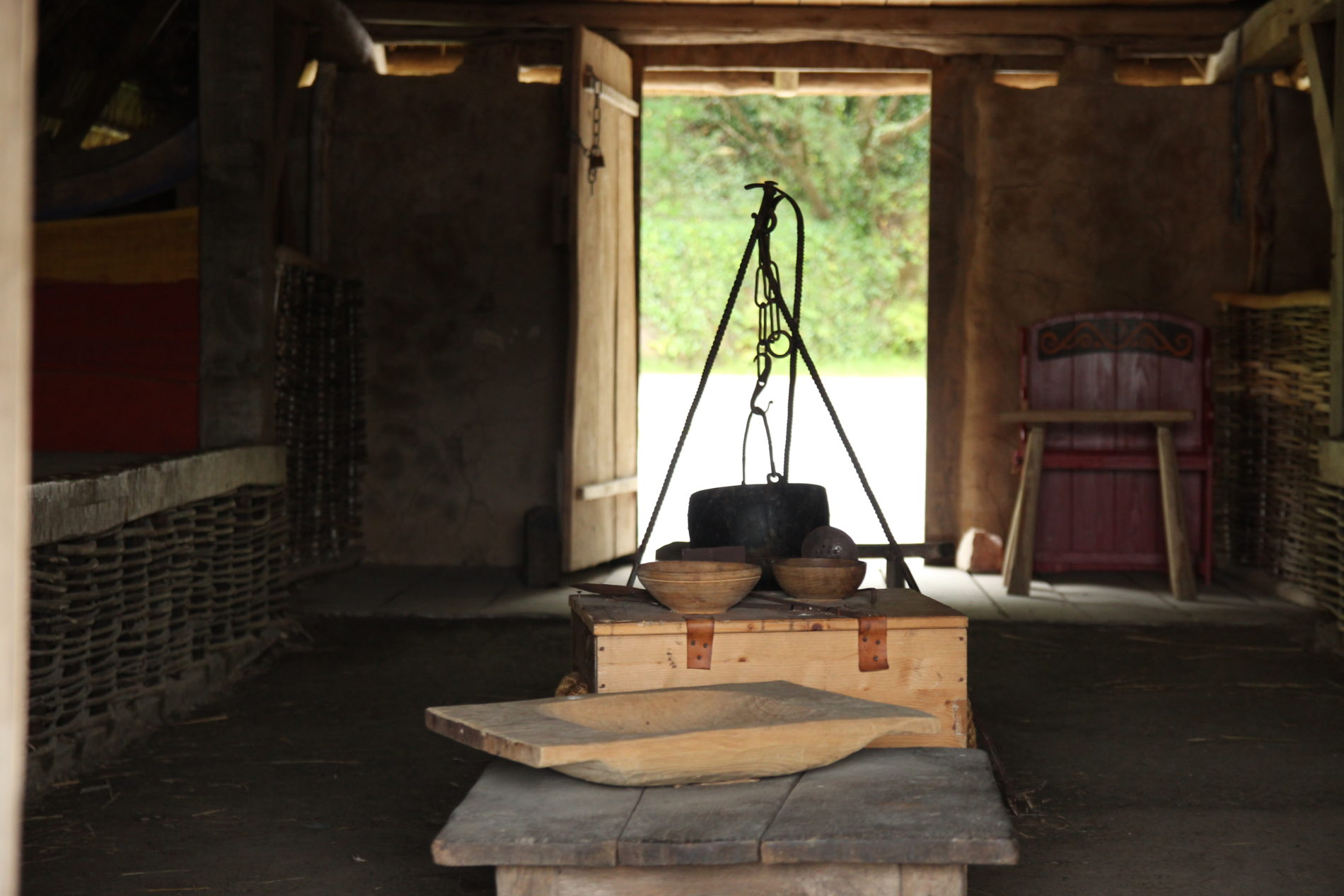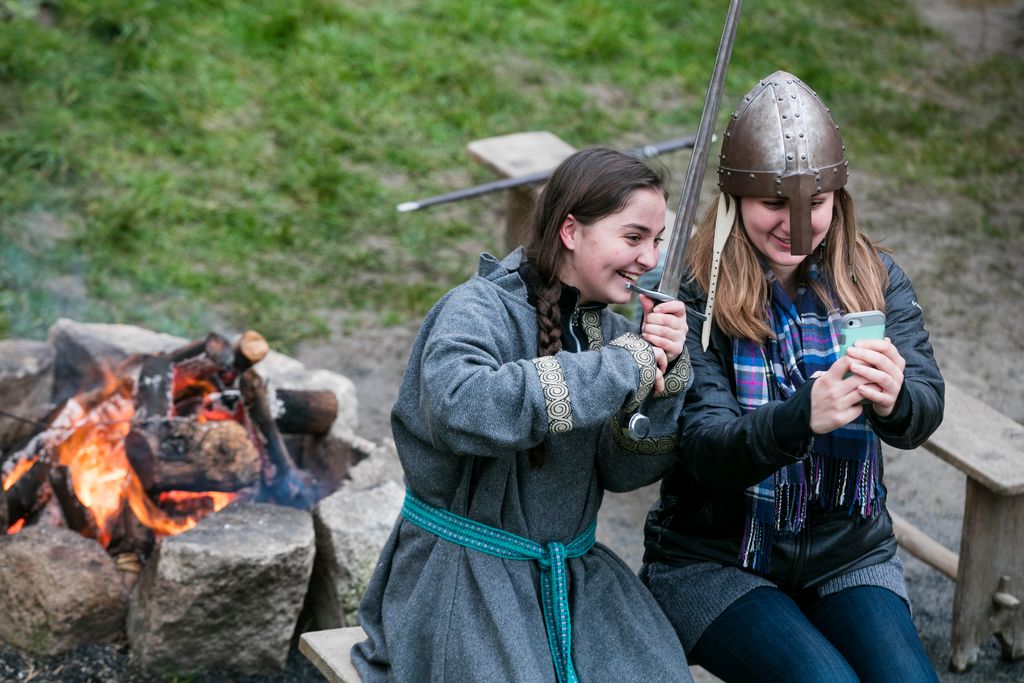By Dr. Denis Shine & Dr. Stephen Mandal
Students are drawn to our Carrick field school for a whole host of reasons – including the opportunity to work within an outdoor museum and live in homestay accommodations making familial connections to Ireland. However, perhaps it is Carrick’s title as “Ireland’s first ever Anglo-Norman stronghold” that most captures the student’s imagination – the Normans were partly descended from Norse Vikings! Built in 1169 CE by Robert Fitzstephen, one of the first knights to land in Ireland, Carrick is the oldest Anglo-Norman fortification in the country. The site developed as an important borough in the thirteenth century, and it was home to one of the first Marshal castles in the south-east. It was also the site of one of Ireland’s earliest Anglo-Norman deerparks. The importance of Carrick as an Anglo-Norman site can’t be overstated. However, coming to Carrick delivers much more than just an education on the Anglo-Norman conquest.

Robert Fitzstephen and Diarmuid McMurrough overlooking the Hiberno-Norse town of Wexford, shortly before capturing it in 1169 CE.
To understand the Anglo-Norman colony, we must first understand what kind of landscape the Anglo-Normans met when they first landed. Students in our program are actively equipped with an understanding of the pre-Norman church, settlement, and economy in both the historical and archaeological records. This includes field visits to early medieval ecclesiastical centres like Ferns but also, more crucially, an understanding of the Viking (or Hiberno-Norse) town of Wexford, the first site which Robert Fitzstephen and the Anglo-Normans laid siege to!
Wexford is synonymous with ‘Vikings’ as it is one of the premier Hiberno-Norse port towns in the whole of Ireland. The Viking impact in the county, and their opposition to Fitzstephen, is a thread the runs right through our program teachings. The first Viking incursions into Wexford were recorded in 819 CE when they raided the island of Begerin (Little Ireland) in the mouth of Wexford harbour. This location was the site of Ibar’s island monastery, a location that was since reclaimed in the mid-19th century and one we visit in several of our programs. A 9th century cross slab, featuring a ‘Viking’ design is testament to their influence here. Raids followed quickly to other sites including Taghmon in 820 CE and Ferns, another program tour location, in 835 and 839 CE. Raiding parties intensified in Wexford and throughout much of Ireland from the mid-9th century as Viking populations established permanent bases at various sites throughout the country. The first reference to a permanent Viking base in Wexford dates to c. 888 CE when old Irish texts record the Irish defeating the Norse of Wexford and Waterford. Certainly, by the time a large Viking fleet was recorded at Waterford in 912 CE, Wexford was established as a permanent and significant base.
Viking presence in the county, and particularly in Wexford Town, was extensive. Their defences of Wexford Town may have comprised more than 25 acres –an area larger than Waterford (18 acres) and nearly half that of Dublin (50 acres). Similar to other large settlements, Hiberno-Norse suburbs would have developed, such as those at St. Doologue’s, St. Iberius’s, and Selskar. A Hiberno-Norse hinterland would also have been required to ‘service’ the town, and it seems this hinterland may have persisted for several centuries. As late as 1283 (over 100 years after the arrival of the Anglo-Normans) the ‘rents, services and customs of Oustmen’ (Hiberno-Norse) was recorded at Rosslare in the south of the county. This area was again recorded as a Norse hinterland in 1307. Place name evidence infers their influence extended throughout the county, with Norse names such as skar (rock), ore (promontory), and gata (road) regularly arising throughout Wexford county. Viking hoards have also been uncovered in the county at Blackcastle and Dunbrody.

The re-created Viking settlement at the Irish National Heritage Park. These houses are typical of what existed in Wexford Town and are accurately recreated as informed by archaeological excavation.
Undoubtedly the greatest Viking impact was the foundation of the Hiberno-Norse town of Wexford, itself named from the Norse ‘Waesfiord’ or ‘Weiss Ford’, meaning ‘the inlet of mudflats’. Here the Norse founded a large permanent settlement at the confluence of the River ativan buy online no prescription Slaney and a smaller tributary – a location type that was preferred at several of their towns in Ireland. Archaeological excavations, such as those at Oyster Lane in the 1970s and Bride Street in the 1980s, revealed extensive evidence of Norse settlement. The latter site revealed up to 16 houses, with archaeological information garnered from this excavation serving as the inspiration for the ‘Viking’ replica house in the Irish National Heritage Park (which contains the Carrick dig site). The streetscape in Wexford also still bears testament to its Norse antecedents, with a large primary street running parallel the sea-front, to which it is connected by a series of small lanes. All our field school students visit Wexford to walk these streets and are expected to peel back the layers of history, deciphering its Hiberno-Norse antecedents while visiting archaeological excavations and probable locations of the Hiberno-Norse town defences and harbour.
These defences were actively used by the Hiberno-Norse town to resist Robert Fitzstephen in 1169. Shortly after landing at Bannow Bay in May of 1169 Robert Fitzstephen accompanied by Diarmuid McMurrough, the deposed King of Leinster, and a combined force of c. 1100 troops attacked and captured the Hiberno-Norse town of Wexford. After this, McMurrough renewed his promise to grant Wexford Town and its dependent territories to Fitzstephen and his half-brother Maurice Fitzgerald (who was yet to arrive). The siege of Wexford is recorded in near contemporary sources that document the Anglo-Norman ‘landing’ and conquest such as Expugnatio Hibernica; The Conquest of Ireland by Giraldus Cambrensis, Fitzstephen’s nephew. Cambrensis claims, somewhat fancifully, that the Hiberno-Norse defenders, who numbered 2000, had retreated behind their walls after burning their suburbs. Fitzstephen then ordered his men to burn all the ships in the town’s harbour, with attacks beginning the next morning on the town. Ultimately, Wexford agreed to surrender and renew their allegiance to Diarmuid – a ‘truce’ some sources claim was negotiated by two bishops who were in the town at the time.

The interior of the Viking house at the Irish National Heritage Park, where several of our students have stayed on past programs.
Immediately following the landing and battle for Wexford, Fitzstephen accompanied McMurrough on a series of short campaigns around Leinster. In early Autumn 1169 his half-brother Maurice Fitzgerald arrived in the country, with ten knights, thirty mounted archers and 100-foot archers. Fitzstephen sent troops to support Maurice and McMurrough in Dublin but he remained in Wexford to fortify the region and build a ‘campaign fort’ on top of a large rock at Carrick (the location of our program), only four miles from the Hiberno-Norse town. Fitzstephen’s construction of this site, outside of the town, is testament that he felt far from secure of his over-lordship over Wexford. He was proven correct in his decision to fortify at Carrick, as the site was laid siege to by the Irish in 1171, with Fitzstephen ultimately taken captive and imprisoned at Begerin – the very site of the first Viking raid in 819 AD!
Undoubtedly the Vikings left an indelible mark in the history of Wexford and play an important part in the early history of the Anglo-Norman arrival and the history of the Carrick site. Their foundation of a town in Wexford connected the southeast of Ireland with far-ranging international links, garnering both commerce and coinage. This, coupled with the emergence of new, energetic and ambitious Gaelic leadership in Wexford in the 11th century, saw this part of the country elevated from an isolated, poorer territory to a region with considerable power and prestige. By the time of the Anglo-Norman invasion, Wexford had been exposed to Norse influence for nearly 300 years and had morphed into a Hiberno-Norse settlement, which was already at the centre of European maps. While the Anglo-Normans successfully captured the town, Wexford would still have identified long after this time as Hiberno-Norse, an identification that persisted in the Norse hinterland until at least the 14th century. Even today, the influence of the Norse in Wexford Town and county is clear for students who are willing to dig a little deeper!

Students contributing to Viking re-enactment on the site.

